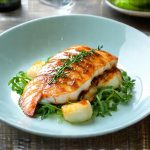Food-induced nausea is an incredibly common experience, ranging from mild discomfort to debilitating sickness. It’s rarely pleasant, but understanding why it happens and, more importantly, how to mitigate its effects can significantly improve your quality of life. Often triggered by something as simple as overeating, a particularly rich meal, or even food sensitivities, nausea isn’t always indicative of serious illness; it’s frequently the body’s natural response to perceived distress. However, the discomfort and disruption it causes necessitate effective strategies for quicker recovery.
The experience of nausea is multifaceted – it involves signals from your digestive system, nervous system, and even your emotional state. This means a holistic approach to relief is often more effective than focusing solely on suppressing symptoms. Many people immediately reach for over-the-counter remedies, which can be helpful in some cases, but lifestyle adjustments and preventative measures are equally crucial. A deeper understanding of the underlying causes – from food poisoning to motion sickness exacerbated by eating – allows you to proactively address the problem and minimize its impact when it inevitably arises. This article will explore practical ways to navigate and recover from food-induced nausea faster, focusing on immediate relief and long-term strategies for prevention.
Immediate Relief Strategies
Nausea is rarely a passive experience; actively addressing it can often shorten its duration and lessen its severity. The first step is recognizing the trigger – was it something you ate? How much did you eat? Where were you when you experienced the onset of nausea? Identifying the source, even vaguely, can inform your approach to recovery. Immediately stopping further food intake is paramount. Continuing to consume food when nauseous will only exacerbate the situation and potentially prolong discomfort. Beyond that initial step, several techniques offer immediate relief:
- Hydration is critical. Dehydration often accompanies nausea and vomiting, creating a vicious cycle. Small, frequent sips of clear fluids – water, clear broth, or electrolyte solutions – are preferable to large gulps, which can further irritate the stomach. Avoid sugary drinks as they may worsen symptoms.
- Rest allows your body to focus on recovery. Lie down with your head slightly elevated to prevent choking in case vomiting occurs. Gentle breathing exercises can also help calm the nervous system and reduce feelings of distress.
- Cool compresses applied to the forehead or back of the neck can provide a soothing sensation and distract from nausea. The cooling effect can subtly interrupt the signals being sent to your brain, offering temporary relief.
It’s important to differentiate between mild nausea that resolves relatively quickly and more severe cases accompanied by vomiting, diarrhea, fever, or abdominal pain. If these latter symptoms are present, seeking medical attention is essential as they may indicate a more serious underlying condition like food poisoning or gastroenteritis. This article focuses on managing milder forms of food-induced nausea where immediate home care can usually provide sufficient relief. Recognizing when to seek help and differentiate GERD from other conditions is vital for your health.
Long-Term Prevention and Management
While quick fixes are helpful in the moment, preventing food-induced nausea altogether is the ultimate goal. A significant portion of prevention involves mindful eating habits: paying attention to portion sizes, chewing thoroughly, and recognizing personal food sensitivities. Food journaling can be an incredibly useful tool for identifying trigger foods – systematically recording what you eat and how you feel afterwards can reveal patterns and help you eliminate problematic items from your diet.
Beyond dietary adjustments, lifestyle factors play a role in digestive health and susceptibility to nausea. Stress management is crucial; chronic stress can disrupt the digestive process and increase sensitivity to certain foods. Regular exercise promotes healthy digestion and reduces overall inflammation, making your body more resilient to potential triggers. Finally, consider how you combine foods – some combinations are easier for the body to digest than others, and experimenting with different pairings may reduce instances of nausea. For instance, avoiding large amounts of fat alongside high-sugar foods can often prevent digestive upset. If a trigger meal is accidentally consumed, knowing best ways to recover will help mitigate the effects.
Soothing Herbal Remedies & Foods
Many natural remedies have been traditionally used to alleviate nausea, though it’s vital to approach these cautiously and never substitute them for medical advice if symptoms are severe. Ginger is perhaps the most well-known – studies suggest that ginger can help reduce nausea by influencing gastric motility and emptying rate. It can be consumed in various forms: fresh ginger tea, crystallized ginger, or ginger candies (ensure they contain real ginger). Peppermint also possesses anti-nausea properties; peppermint tea or inhaling peppermint essential oil may provide relief for some individuals.
However, it’s crucial to note that herbal remedies aren’t universally effective and can interact with medications. Always consult a healthcare professional before incorporating new supplements into your routine, particularly if you have underlying health conditions. Certain foods can also be incredibly soothing during periods of nausea:
- Bananas: Rich in potassium which is often depleted through vomiting, offering gentle nourishment.
- Rice: Bland and easy to digest, providing carbohydrates for energy without irritating the stomach.
- Applesauce: Similar to rice, applesauce is a simple carbohydrate source that’s gentle on the digestive system.
- Toast: Dry toast can help absorb excess stomach acid and reduce feelings of discomfort.
Understanding Food Sensitivities & Intolerances
Nausea frequently arises from underlying food sensitivities or intolerances – conditions where your body struggles to properly digest certain foods, even if they aren’t causing an allergic reaction. Lactose intolerance, gluten sensitivity, and histamine intolerance are common examples. These sensitivities often manifest as digestive symptoms like nausea, bloating, gas, and diarrhea. Identifying these issues requires careful observation and potentially professional help.
- Elimination diet: This involves removing suspected trigger foods from your diet for a period of time (typically 2-3 weeks) and then gradually reintroducing them one at a time to observe any reactions.
- Food allergy testing: While primarily used for identifying true allergies, some tests can also provide clues about sensitivities.
- Working with a registered dietitian: A dietitian can help you navigate the complexities of food intolerances and develop a personalized eating plan that minimizes symptoms. Understanding how to spot delayed reactions from acidic meals is also helpful in managing these issues.
It’s important to distinguish between a food allergy (an immune system response) and a food intolerance (a digestive issue). Allergies typically involve more severe reactions like hives, swelling, or difficulty breathing, requiring immediate medical attention. Intolerances are generally less serious but can still significantly impact quality of life if left unaddressed.
Navigating Travel & Motion Sickness
Food-induced nausea isn’t always related to the food itself; it’s often compounded by travel and motion sickness. Eating a heavy meal before or during travel – whether by car, plane, boat, or train – can significantly increase your susceptibility to both. The body is already working hard to adjust to motion, and digestion adds another layer of stress.
- Light meals: Opt for light, easily digestible snacks or meals before and during travel.
- Ginger: As mentioned earlier, ginger is a powerful anti-nausea agent that can be particularly helpful in preventing motion sickness.
- Hydration: Staying adequately hydrated is essential as dehydration exacerbates nausea symptoms.
- Focus on the horizon: Looking at a fixed point on the horizon can help your brain reconcile the conflicting signals from your inner ear and eyes, reducing feelings of disorientation.
- Avoid reading or screens: These activities can worsen motion sickness by focusing your vision on something stationary while your body is in motion.
If you experience nausea related to food sensitivities, it’s important to understand sulfur-related gas and other potential causes. You may also find it helpful to consider how long it takes to heal from chronic GERD if symptoms are persistent. Finally, knowing how to recover after a digestive flare up can help you manage more severe episodes.
Ultimately, recovering from food-induced nausea faster requires a combination of immediate relief strategies, long-term preventative measures, and an understanding of your individual triggers. By prioritizing hydration, rest, mindful eating habits, and addressing potential underlying sensitivities, you can minimize the impact of this common discomfort and reclaim control over your well-being.


















